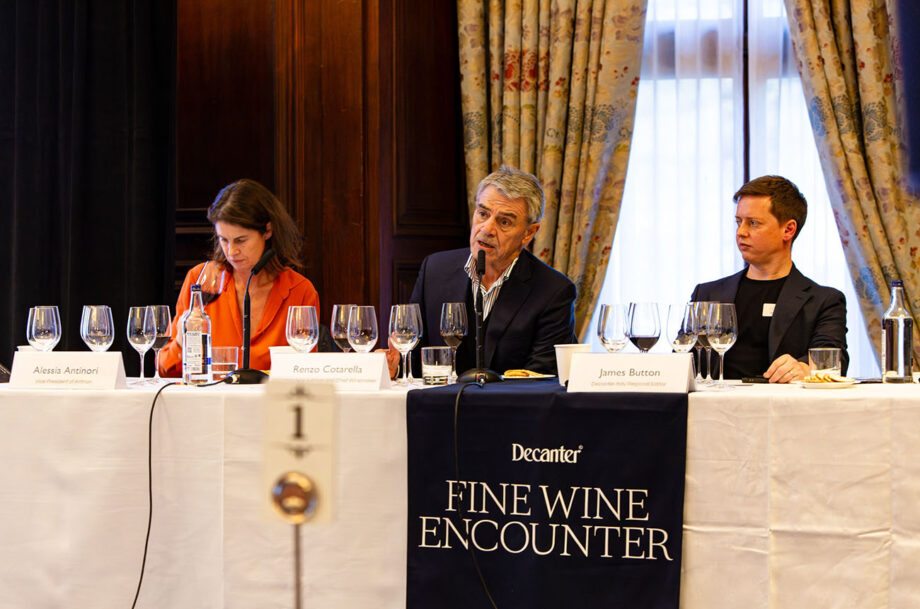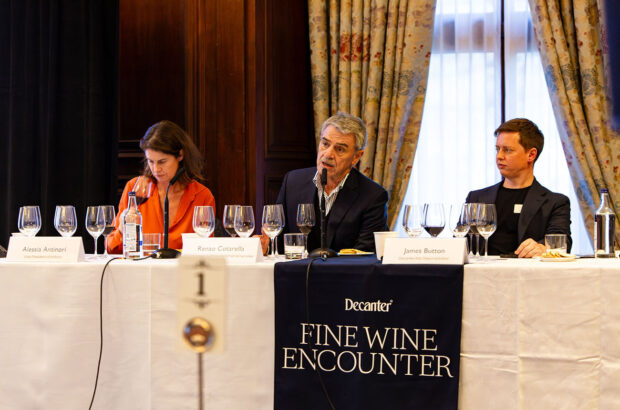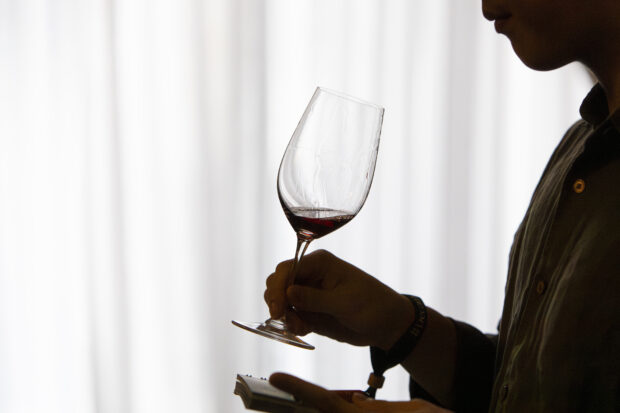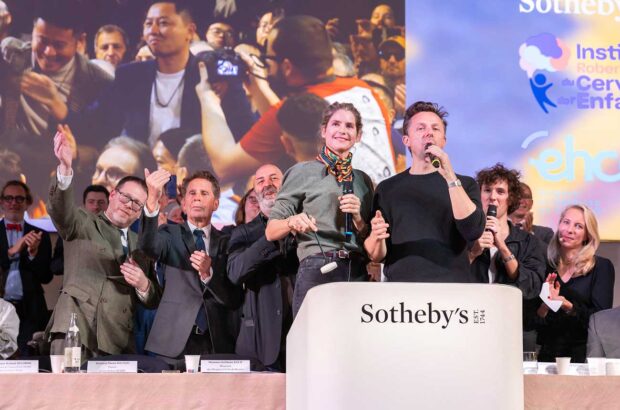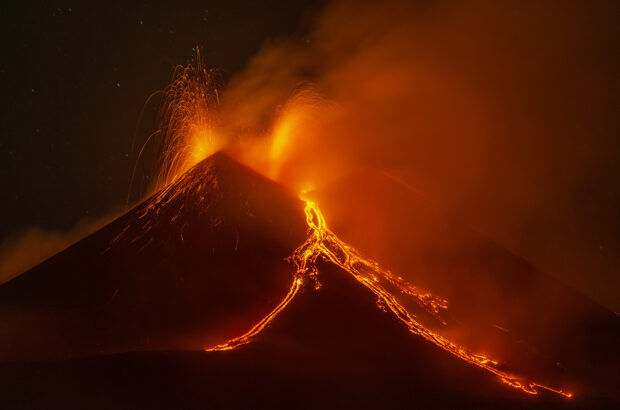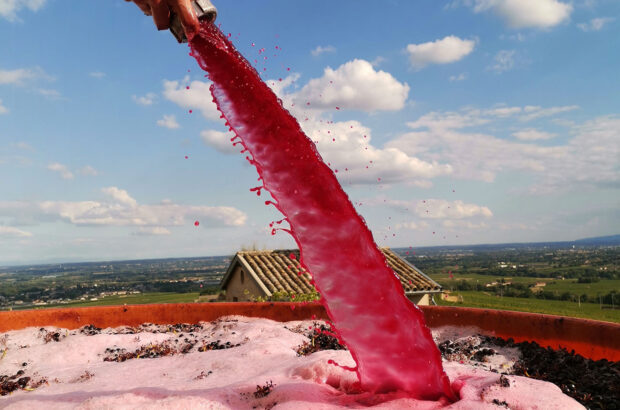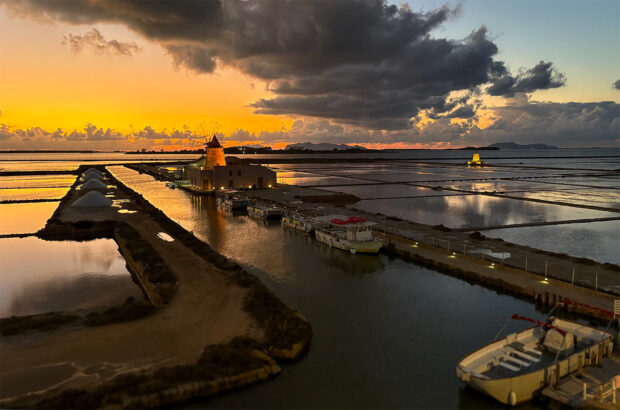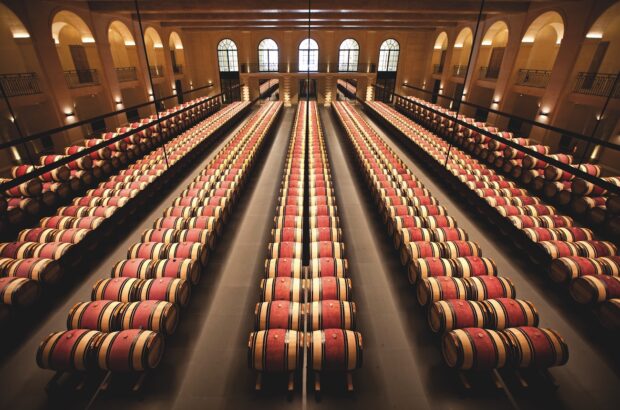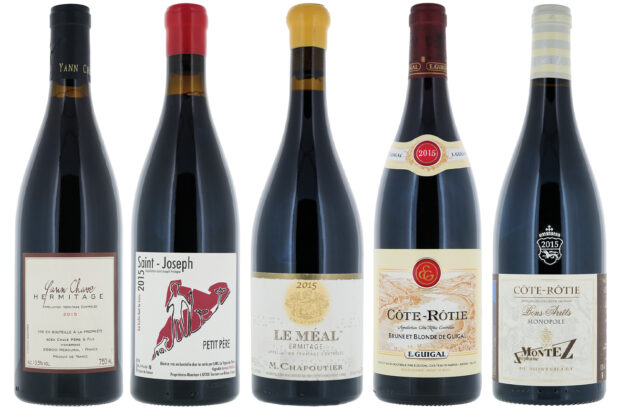Guado al Tasso is owned by the Antinori family, who have been making wine in Tuscany for several centuries – hosting the masterclass was 26th-generation Alessia Antinori, daughter of Piero, and the company’s head oenologist and CEO, Renzo Cotarella.
The estate is framed by the three key roads of Bolgheri: the ancient Via Aurelia which runs parallel with the coast, running north/south; the iconic cypress-lined Viale dei Cipressi, which runs eastwards from the Via Aurelia; and the Via Bolgherese, which runs north/south from the Viale dei Cipressi and parallel with Via Aurelia, and leads to the village of Bolgheri itself.
It’s along the latter that many of the area’s wineries can be accessed, including Guado al Tasso.
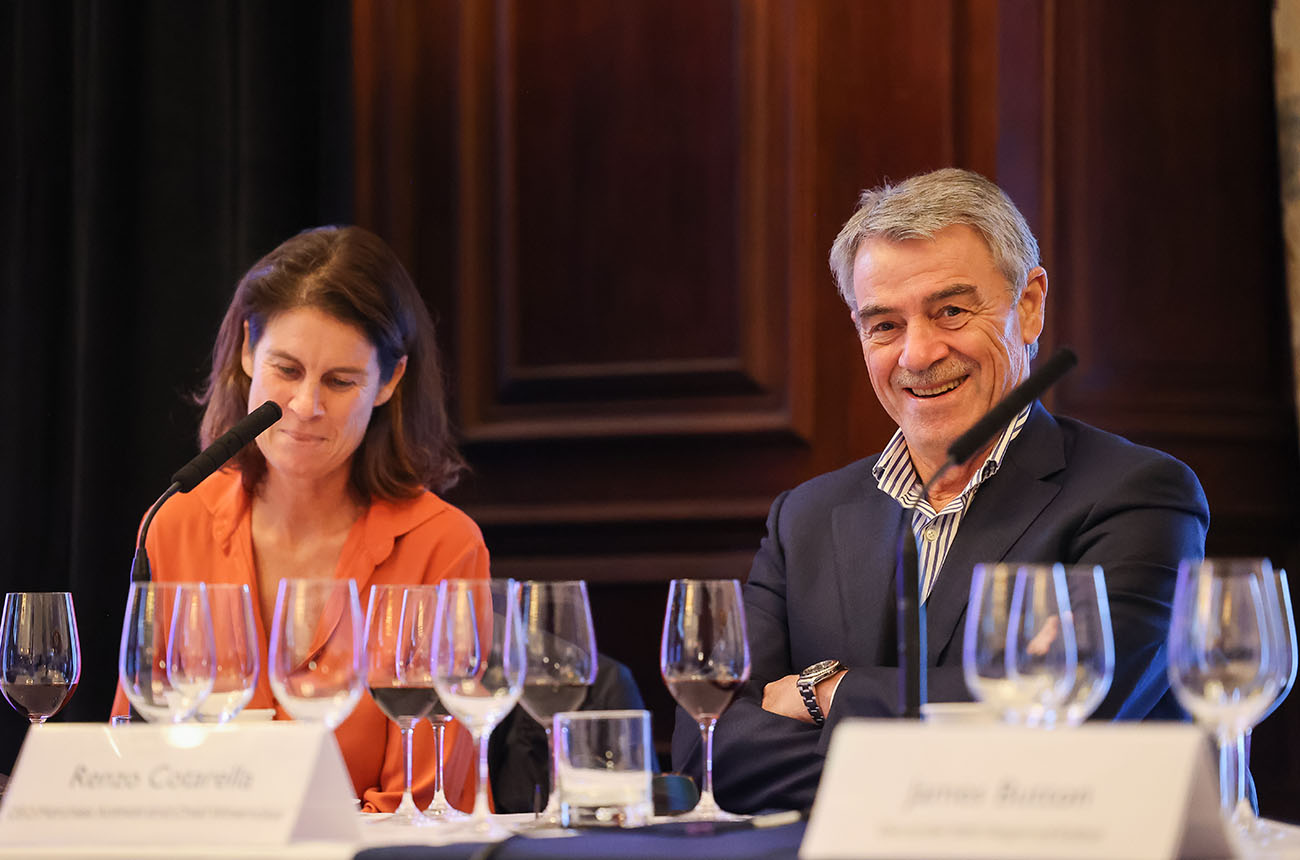
Alessia Antinori and Renzo Cotarella at the Guado al Tasso masterclass in London. Credit: Lensi Photography/ Decanter
The lineup
Guado al Tasso, Bolgheri Superiore 1998 (magnum)
Guado al Tasso, Bolgheri Superiore 2007
Guado al Tasso, Bolgheri Superiore 2013
Guado al Tasso, Bolgheri Superiore 2022
Guado al Tasso, Matarocchio, Toscana 2007 (magnum)
Guado al Tasso, Matarocchio, Bolgheri Superiore 2013
Guado al Tasso, Matarocchio, Bolgheri Superiore 2016
Guado al Tasso, Matarocchio, Bolgheri Superiore 2021
Tasting notes below
A new home for Cabernet Franc
‘Bolgheri is a wonderful area for international varieties…for Cabernet Franc it’s one of the best places in the world,’ exclaimed Antinori’s head oenologist of over 40 years.
And this masterclass turned out to be a celebration of Bolgheri’s zeitgeist variety, appearing in Guado al Tasso’s Bolgheri Superiore from 2007 and taking the stage solo in the super-premium Matarocchio.
The first release of Guado al Tasso Bolgheri Superiore was the 1990 vintage, but there was no initial follow-up in 1991 due to unfavourable conditions.
In its original guise it was a blend of 60% Cabernet Sauvignon, 30% Merlot and 10% other grapes, including Syrah and Petit Verdot.
Cotarella calls 1998 the wine’s first great vintage, noting that it was the warmest summer until 2022. However, it was the 2007 vintage that proved to be a turning point for the estate.
2007 yielded some seriously good Cabernet Franc, and so the decision was made to to incorporate some into Guado al Tasso’s Bolgheri Superiore, Cotarella explaining that the idea was to replace the Syrah in order to produce a more refine, vibrant and ‘more authentic’ wine.
Since then, the blend has slowly shifted towards a larger portion of Cabernet Franc, arriving at 31% in the 2022 vintage. Cotarella explains that he aims to make Guado al Tasso a ‘drinkable but not simple’ wine, and favours what he describes at the softer entrance but also more backbone that the variety brings to a blend.
The birth of Matarocchio
‘When we bottled 2007 Guado al Tasso we didn’t use all the Cabernet Franc because we didn’t want to change the character too much.’
Left with such high quality fruit, the team decided to bottle a single-variety wine, but were hesitant to release it commercially until they were sure they could replicate the success.
Cotarella compares this process of patience to the cautious release of Solaia in the 1970s.
The wines
The masterclass was divided into two flights: Guado al Tasso Bolgheri Superiore, followed by Matarocchio.


